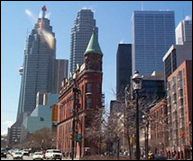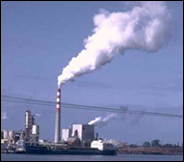Human Economic Activities
Fertile soils, natural water, and abundant natural resources made the mixedwood ecozone attract many Canadians to settle in this region. The large number of human activity in the Mixedwood plains made the population density especially in the southern region one of the most populated places in Canada. Consequently, the Mixedwood plains ecozone is one of the most productive ecozone in Canada.

This ecozone is extremely populated. Rapid urbanization made the vast forests that once used to be thriving in the Mixedwood plains, into residential, commercial and industrial regions for humans to live on. More than half the people living in Canada lives on one of the thirteen major cities located within the ecozone. Urbanization was exceptionally high in Toronto. During the past few decades, the population in Toronto was steadily rising and compared to thirty years ago, the population rose my eighty percent. Population density was particularly high too in the Mixedwood plains- a little over ten thousand people on every 100 km≤ of land.

Primary, secondary, and tertiary industries are thriving in the Mixedwood plains. The Mixedwood plains ecozone offers great land for agriculture. Much of the land is more than suitable for growing. Areas in near the Niagara Fall provide the best land for growing fruit. The large number of secondary industries in this ecozone is slowly dropping as more and more Canadians rely on tertiary industries and services. Cities in the Mixedwood plains are extremely developed and is heading toward the technological era with many other developed countries. Overall, the Gross Domestic Product (the total mount of money of all the goods and services sold that year) in the Mixedwood plains is near three hundred and thirty thousand- thatís even larger than all the other ecozones put together.

However, human activity in the Mixedwood plains is more like a double-edged sword. Although, the economy in the Mixedwood plains is flourishing, human activity had also created a few problems. Large amounts of agricultural and natural wetlands were lost in order to create land for urbanization. Many trees had to be cut down, and consequently, many animals had to migrate to different regions since their home was destroyed. Major factories polluted the air and made the air sometimes even dangerous to breathe. During the summer, increasing amounts of smog blanket the sky, especially in Toronto and Windsor area, into a horrible shade of pale gray. Human activity also introduced some new species of animals into the lakes and forests in Canada and many of them are causing a lot trouble.

Tourism in Canada remained pretty much the same if not better. Some famous landmarks in the Mixedwood plains continue to improve and promote its economy but nothing new was recently constructed. The CN tower, and many historical cities in the Quebec region of the Mixed wood plains continue to lure tourists into coming to Canada.
A Joshua Liu and Timothy Yip Production 2003-2004
|
